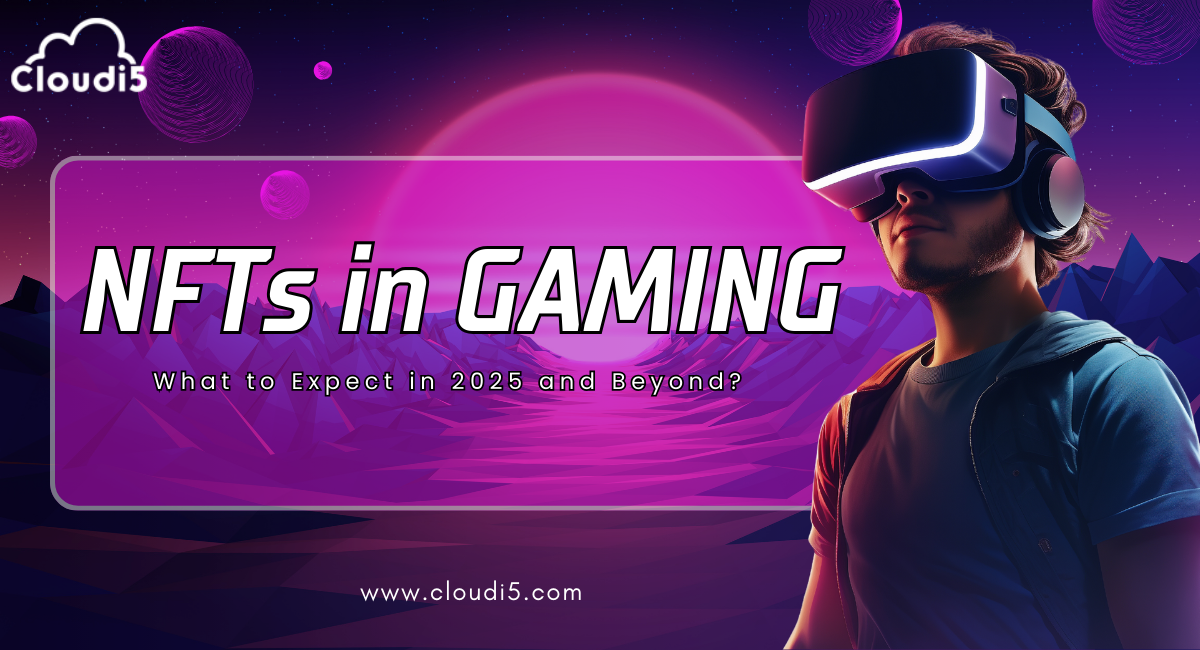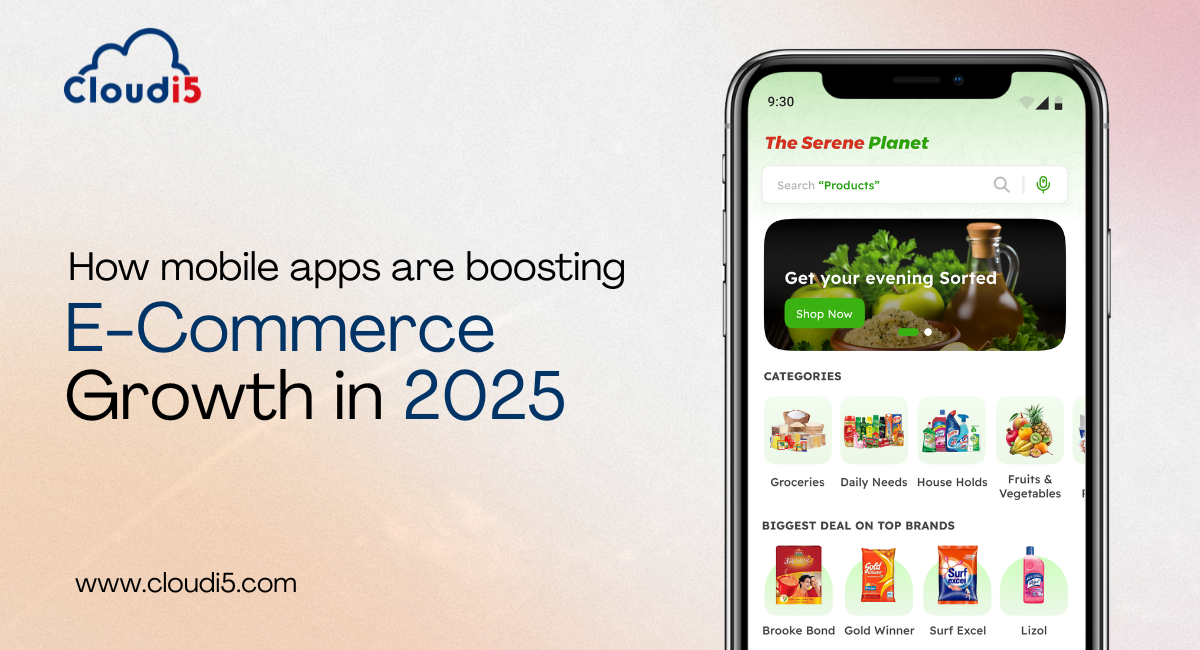
NFTs In Gaming: What To Expect In 2025 And Beyond
"In the world of gaming, you’re not just playing – you’re owning."
NFTs are changing how we experience video games. In the past, in-game items like skins, weapons, and characters weren’t truly yours – they were just temporary. But with NFTs, these items become digital assets that you own. You can keep, trade, or sell them whenever you want. This gives players real ownership and makes the gaming experience more exciting. For developers, NFTs offer new ways to earn and connect with players.
Looking ahead to 2025, NFTs will make gaming about more than just playing. Using Blockchain Technology, players will have true control over their digital items. This change adds real value to gaming, allowing players to turn their passion into something meaningful. Developers will also benefit, with new ways to make money and engage with their community. NFTs are making gaming more fun, rewarding, and focused on the player. The future of gaming is here, and it’s all about owning what you play.
In this blog, we’ll explore what players can expect from NFTs in gaming by 2025 and how this tech will continue to change the gaming world.
Understanding NFTs in Gaming
1. What are NFTs and How Do They Work?
NFTs (Non-Fungible Tokens) are unique digital items stored on a blockchain, which keeps them safe and ensures they can’t be copied. NFTs prove you own a specific digital item.
2. How Are NFTs Different from Traditional In-Game Items?
Traditional in-game items are tied to your account and can be taken or changed by the game developer. NFTs are stored on a blockchain, giving you real ownership that isn’t controlled by the game.
3. Real-world Examples of NFT-Based Games
- Axie Infinity: A game where you collect and battle creatures called Axies. These are NFTs, and players can earn cryptocurrency.
- The Sandbox: A virtual world where players can create, own, and sell items. Everything, from land to characters, is an NFT.
The Benefits of NFTs in Gaming
Player Ownership
- True Ownership: NFTs let players fully own their in-game items, without relying on the game company.
- Trade and Exchange: Players can buy, sell, or trade NFTs freely on open marketplaces.
Economic Opportunities
- Play-to-Earn: NFT games often let players earn real-world money by playing or trading items.
- Financial Gains: Valuable NFTs can be traded, rented, or licensed for profit.
Enhanced Game Experiences
- Unique Items: NFTs allow for one-of-a-kind, limited-edition items in games, making them feel special.
- Interactive Worlds: NFT games can offer dynamic environments where players shape their experiences.
The Current State of NFTs in Gaming
1. Early Adoption
The gaming world was quick to try out NFTs. Some games started using NFTs as early as 2017. CryptoKitties, a game where players collect and breed digital cats, was one of the first games to use NFTs. Other early games like Axie Infinity and Gods Unchained also used NFTs to create player-owned economies and competitive gameplay.
2. Challenges Faced
NFTs in gaming face some challenges. One major issue is the difficulty of understanding blockchain technology. Many gamers don’t know how cryptocurrencies and blockchain work, making it hard for them to join NFT-based games.
Another challenge is the unpredictable nature of cryptocurrency markets. The value of NFTs can change a lot, which can make them risky for players. Plus, there is uncertainty about regulations around NFTs and cryptocurrencies, which can slow their growth in gaming.
3. Success Stories
Despite the challenges, some games have done well with NFTs. Axie Infinity has become hugely popular, letting players earn real money by breeding, battling, and trading digital creatures called Axies.
Other successful games include Sorare, a fantasy football game that uses NFTs to represent real-world soccer players, and The Sandbox, a virtual world where players can create and sell their own content. These games show that NFTs can create fun, player-driven economies and strong gaming communities.
Potential of NFTs in Gaming
Enhanced Player Ownership
NFTs give players real ownership of in-game items. In the past, players didn’t really own items—they were just licenses granted by the game developers. With NFTs, players own unique digital items stored on a blockchain, making them safe from being lost or stolen. This ownership allows players to trade, sell, or gift their items, creating a fairer and more rewarding gaming experience.
New Economic Models
NFTs can change how the gaming economy works. Players can create, trade, and profit from in-game items, leading to player-driven economies. This opens up new opportunities for creators, traders, and collectors. It can also help game developers earn more by selling virtual goods, like land, skins, or items, as NFTs.
Immersive Gaming Experiences
NFTs can make games more engaging by allowing players to personalize their experience. Players can own rare NFTs that unlock special abilities or give access to exclusive content. This customization can make the game more fun and increase player satisfaction.
Interoperability
NFTs can also be used across different games. Since they are stored on a blockchain, NFTs can act as a universal standard for digital items. This means players could take their assets from one game to another, creating an interconnected gaming world or metaverse where players move between games with their digital possessions.
Predictions for 2025 and Beyond
Mainstream Adoption
By 2025, more and more people will start using NFTs in gaming. Big game developers are likely to include NFTs in their games to make them more exciting and connect with players. As popular games use NFTs, more players will get used to the idea, leading to wider acceptance.
Regulatory Clarity
Clear rules about NFTs will be important for the growth of NFT gaming. While many countries are still figuring out how to regulate NFTs, we will likely see clearer laws in the coming years. These rules could help businesses but also might limit innovation if they are too strict.
Technological Advancements
As blockchain technology improves, NFTs in gaming will become better. Solutions like layer-2 networks will help blockchains handle more users and faster transactions, making them work better for games. Also, smarter technology behind NFTs will allow for more advanced and creative games.
Innovative Use Cases
NFTs will open up new ways to enjoy gaming. Here are some examples of how NFTs could be used:
- Digital collectibles: Players can collect rare digital art, music, or videos as NFTs.
- Virtual real estate: Players can own and build on virtual land in game worlds.
- Play-to-earn models: Players can earn real money by playing games and completing tasks.
- Social tokens: Players can create tokens to represent their communities and reward active members.
As the technology keeps evolving, we can expect even more exciting uses for NFTs in gaming.
What Players Can Expect from NFTs in Gaming (2025 and Beyond)?
As we move into 2025 and beyond, NFTs (Non-Fungible Tokens) are set to change gaming in big ways. Here’s what players can look forward to:
True Ownership of Digital Items
- Real Ownership: Players will really own their in-game items, characters, and even virtual land. These things won’t just be part of the game – they’ll belong to you.
- Interoperability: These items can be used in different games, so if you own something in one game, you might be able to use it in another.
New Ways to Earn
- Play-to-Earn: Players can earn real money by playing games, creating things, or trading in-game items.
- Player-Run Economies: Players can trade, sell, and work together, building a strong and active in-game economy.
More Exciting Game Worlds
- Personalized Gameplay: NFTs will help make your gaming experience unique. You could have special items or characters that are just for you.
- Virtual Land: Players can own land in the game, build on it, and even rent it out to others.
Cool New Features
- Digital Collectibles: You could collect rare items like virtual art or music, and trade them with others.
- Social Tokens: Players could create their own groups and reward other players for their contributions with special tokens.
Challenges Ahead
While the future of NFT gaming looks amazing, there are some issues to solve:
- Regulations: We need clear rules to keep NFT transactions safe and fair.
- Technical Problems: Some issues, like slow speeds and high costs, need to be fixed to make NFT gaming easy for everyone.
- Environmental Concerns: The energy used by blockchain technology can be high. In the future, we’ll need to find ways to make NFT gaming greener.
Even with these challenges, NFTs have the potential to completely change the way we play games. As technology improves, we can expect a new era where players have more control, ownership, and even ways to make money from gaming.
Conclusion
NFTs have the potential to transform gaming by giving players true ownership of in-game items, opening up new ways to earn, and providing more personalized experiences.
Looking ahead to 2025 and beyond, NFTs will become even more popular as technology advances and new ideas emerge. However, for the industry to thrive, we need clear rules and solutions to reduce the environmental impact of blockchain.
Are you ready to explore the future of gaming? Get into NFTs, discover exciting projects, and join the growing NFT gaming community. Together, we can shape the future of gaming and fully realize the potential of this game-changing technology.
The future of gaming is bright, and NFTs are leading the way!
Trusted By












Leave Comments